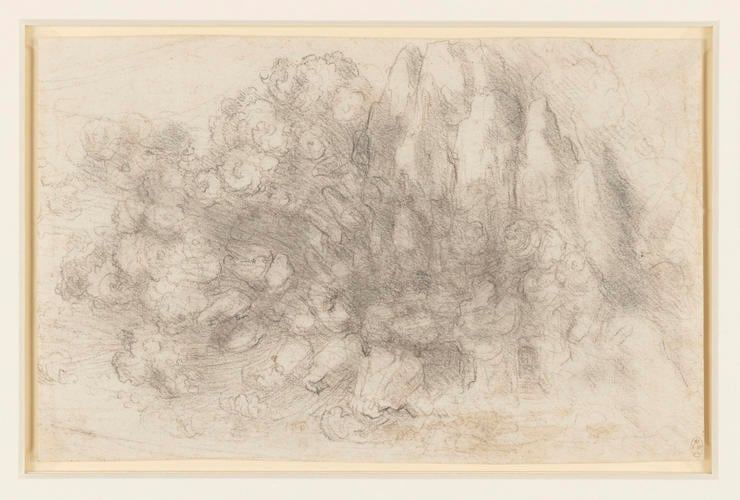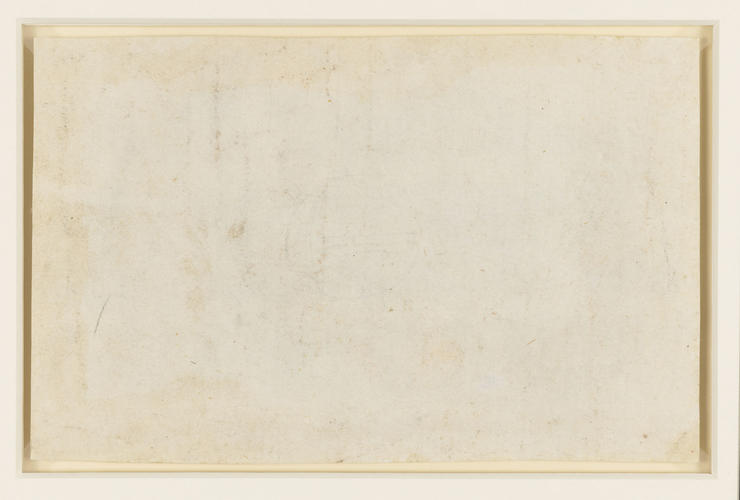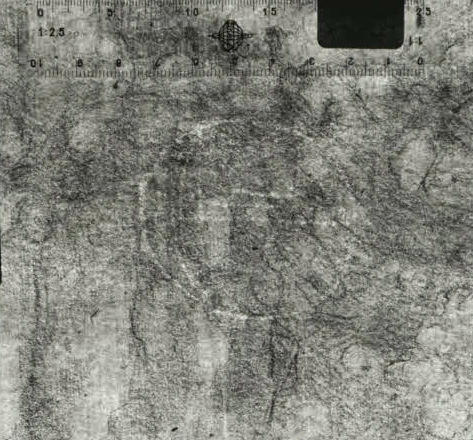-
1 of 253523 objects
A rockfall in a mountainous landscape c.1512-18
Black chalk | 17.8 x 27.8 cm (sheet of paper) | RCIN 912387

Leonardo da Vinci (1452-1519)
912387 R.jpg c.1512-18

Leonardo da Vinci (1452-1519)
912387 V.jpg c.1512-18

Leonardo da Vinci (1452-1519)
912387_watermark.jpg c.1512-18



-
In this drawing the side of a mountain is collapsing, great chunks of rock exploding outwards, issuing plumes and vortices of dust; what seems to be the entrance to a tunnel at lower right offers no protection from the forces of nature. This obsessive, terrible quality to Leonardo’s late landscapes would reach its final expression in the Deluges (RCIN 912376 - 912386), in which all matter is swept away. Melzi's number 188.
Leonardo’s interest in rock formations was evident as early as the 1480s, in the Virgin of the Rocks (London, National Gallery). Those rocks were ancient but stable, whereas in drawings from the last decade of his life they are subject to massive forces that wrench them from the earth. RCIN 912397 depicts a rock formation similar to that seen in the left background of the Madonna and Child with St Anne and a lamb (Paris, Louvre) and while that drawing is probably not a direct study for the painting, the connection emphasises Leonardo’s understanding of the earth as a place of infinite flux.
Text adapted from Leonardo da Vinci: A life in drawing, London, 2018Provenance
Bequeathed to Francesco Melzi; from whose heirs purchased by Pompeo Leoni, c.1582-90; Thomas Howard, 14th Earl of Arundel, by 1630; probably acquired by Charles II; Royal Collection by 1690
-
Creator(s)
Acquirer(s)
-
Medium and techniques
Black chalk
Measurements
17.8 x 27.8 cm (sheet of paper)
Markings
watermark: Crossbow in circle (not in Briquet, but range B743-750) [-]
Category
Object type(s)
Other number(s)
RL 12387Alternative title(s)
A collapsing mountain